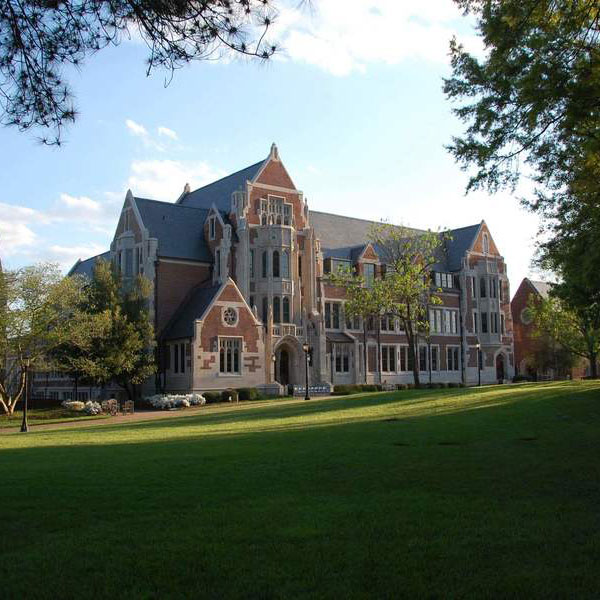Faculty Resources
What is Implicit Bias?
Implicit bias refers to the attitudes or stereotypes that affect our understanding, actions, and decisions in an unconscious manner (“State of the Science: Implicit Bias Review 2017," The Kirwan Institute). Among the key attributes of implicit biases are the following:
- Implicit or Unconscious: Activated unconsciously and involuntarily, without being explicitly controlled
- Bias: This bias may skew toward either a favorable or an unfavorable assessment
- Pervasiveness: Implicit attitudes and stereotypes are robust and pervasive
- Universal: We all have biases! The literature shows that even those individuals openly and deeply committed to equity can hold unconscious or implicit biases. Having biases is human nature. Ignoring this inhibits our ability to mitigate these biases.
As we build the resources page to support the Agnes Scott community in understanding implicit bias, we are focusing first here on gender and classroom biases, but the center’s staff is available to provide customized workshops and to lead conversations on all aspects of bias and mitigation, and these pages will continue to be updated to reflect new information.
Learn more about implicit bias by exploring the following resources.
- Who Me, Biased?The New York Times produced a series of six short videos (between 1 and 3 minutes each) on implicit bias and its effects.
- How to Overcome Our Biases? Walk Boldly Toward Them Verna Myers in a TedxTalk offers three important calls of action for acknowledging our unconscious (and conscious) biases and changing our relationships with others, especially with young black men.
- Look Different is an MTV campaign to help people “unlearn biases, open up conversations with family & friends and [get] specific things you can do to fight for what’s right. There are resources for educators, information on racial, gender, and anti-LGBT bias, a bias cleanse, and several other tips and actions to take.
- Implicit Association Test Project Implicit is a non-profit organization founded by researchers from the University of Washington, Harvard University, and the University of Virginia. Its goal is to educate the public about hidden biases and to function as a virtual laboratory for collecting data on unconscious bias. The link takes you to a page where you can take online implicit association tests (IATs) relating to different types of unconscious bias, including skin-tone preference, sexuality preference, the link between gender and science, age preference, the link between gender and family versus career, racial preference, weight preference, disability preference, and others. For an analysis of issues relating to IAT procedures and application, see Nosek et al (2005).
- Interrupting Bias in the Faculty Search ProcessThe University of Washington’s ADVANCE Center for Institutional Change created a training video and facilitation guide to help faculty search committees uncover and address unconscious bias in the faculty candidate evaluation process.
- Gender Bias Learning Project is a project of the Center for WorkLife Law UC Hastings College of the Law. Make sure to check out the Bias Pattern and the Gender Wars tabs.
- In 2018, The Chronicle of Higher Education asked members of the Academy to take on the theme of women and power in the academy and published their responses in The Awakening: Women and Power in the Academy
- The VMware Women’s Leadership Innovation Lab at Stanford University generates foundational research to advance women’s leadership by diagnosing barriers, developing and evaluating interventions to get beyond barriers, and disseminates research-based solutions by bridging the gap between research and practice.
- Bagues, M., Sylos-Labini, M., & Zinovyeva, N. (2017). Does the gender composition of scientific committees matter?. American Economic Review, 107(4), 1207-38.)
- Cecchi-Dimeglio, P. (2017). How gender bias corrupts performance reviews, and what to do about it. Harvard Business Review, apr.
- Kardia, D. B., & Wright, M. C. (2004). Instructor identity: The impact of gender and race on faculty experiences with teaching. CRLT Occasional Papers, 19, 1-8.
- Knobloch-Westerwick, S., Glynn, C. J., & Huge, M. (2013). The Matilda effect in science communication: an experiment on gender bias in publication quality perceptions and collaboration interest. Science Communication, 35(5), 603-625.
- Perna, L. W. (2005). Sex differences in faculty tenure and promotion: The contribution of family ties. Research in Higher Education, 46(3), 277-307.
- Trix, F., & Psenka, C. (2003). Exploring the color of glass: Letters of recommendation for female and male medical faculty. Discourse & Society, 14(2), 191-220.
- National Excellence Leadership Academy Techniques for Improving Social Belonging in Digital Classrooms (Social Belonging and Student Success
- San Diego State University offers some great tips for Maintaining Equity and Inclusion in Virtual Learning Environments. Other tips include:
- Address microaggressions in discussion boards, chats, and other places where students interact
- Consider integrating culturally relevant materials
- Be aware of variation in students’ capacity to manage remote learning
- Be aware of how the current situation is impacting different communities
- OCR Short Webinar on Online Education and Website Accessibility
